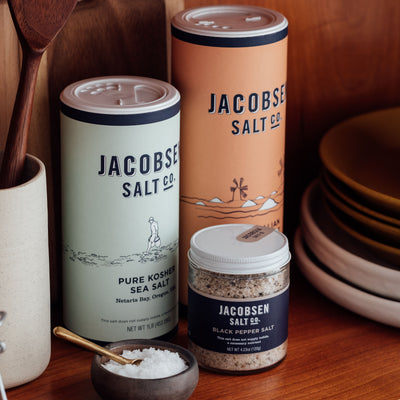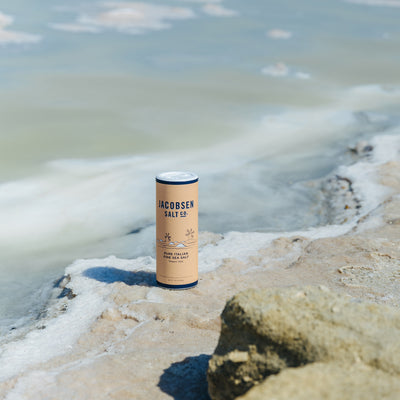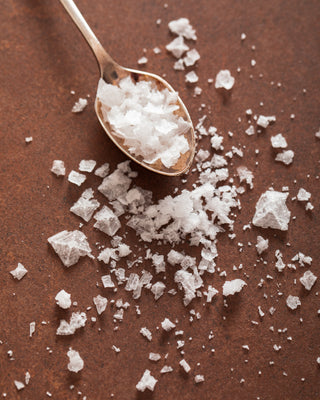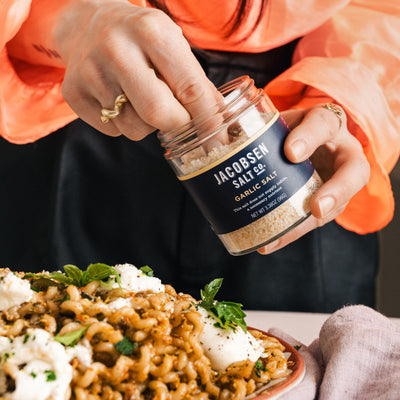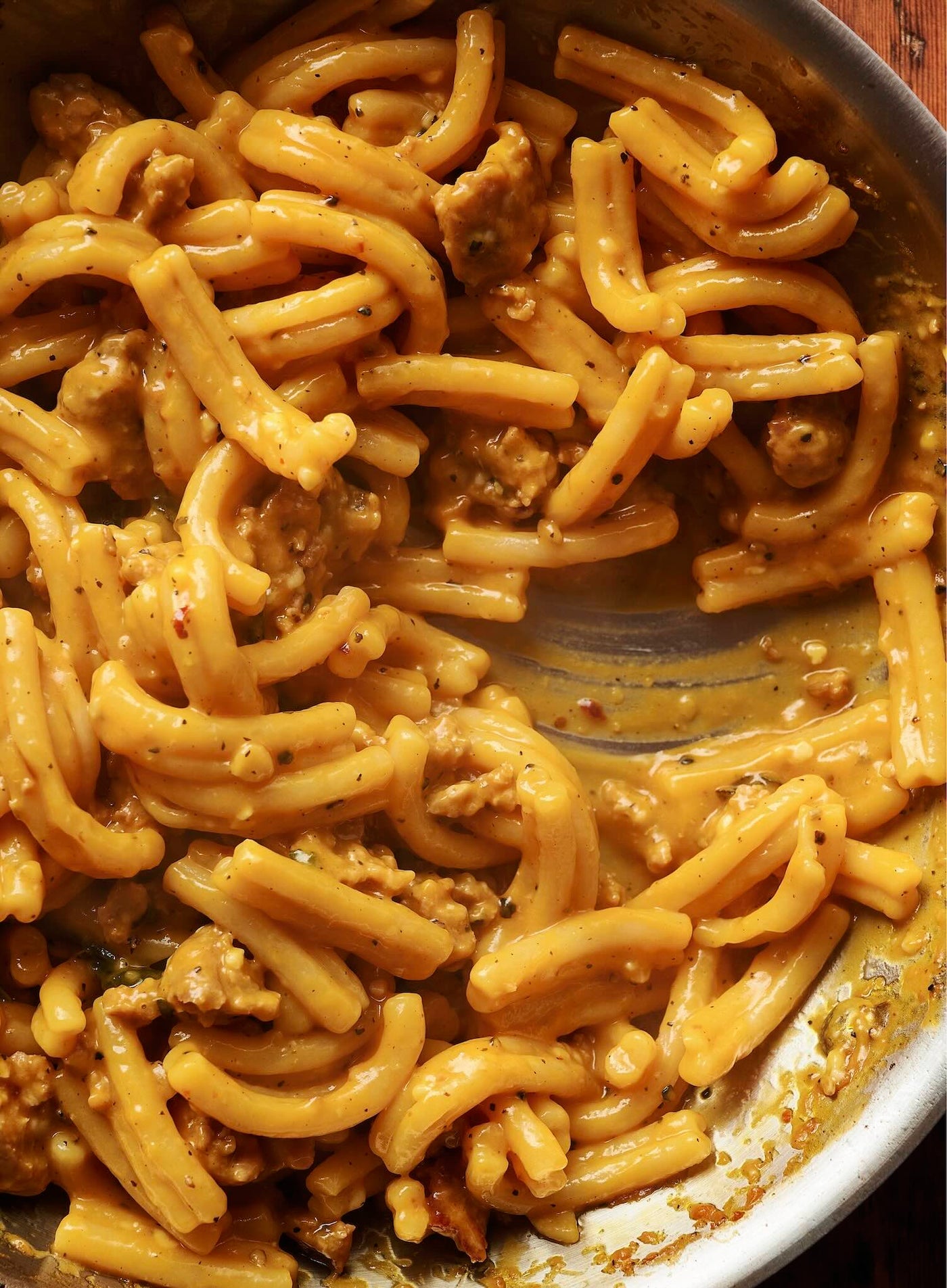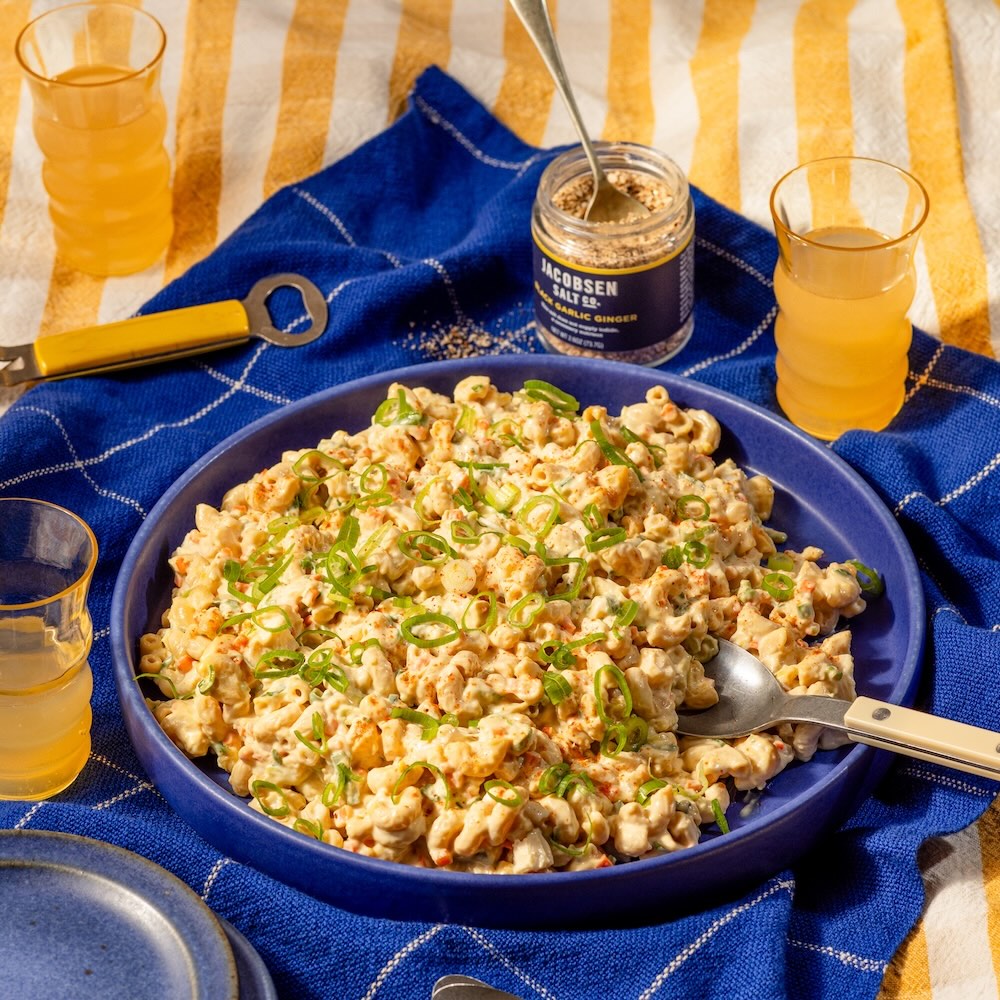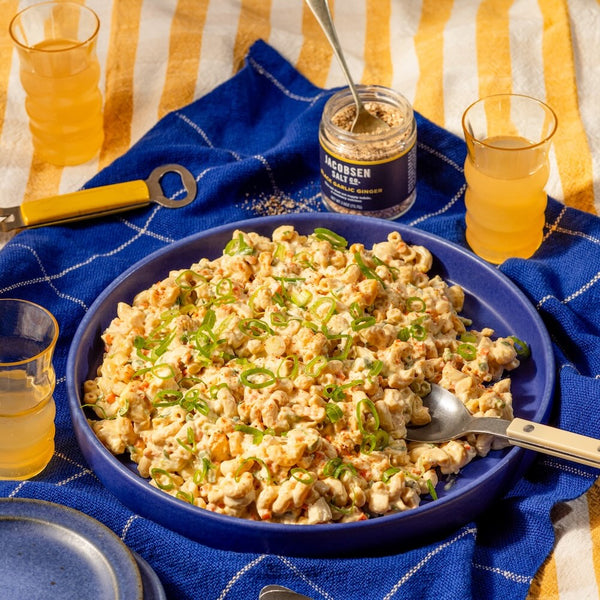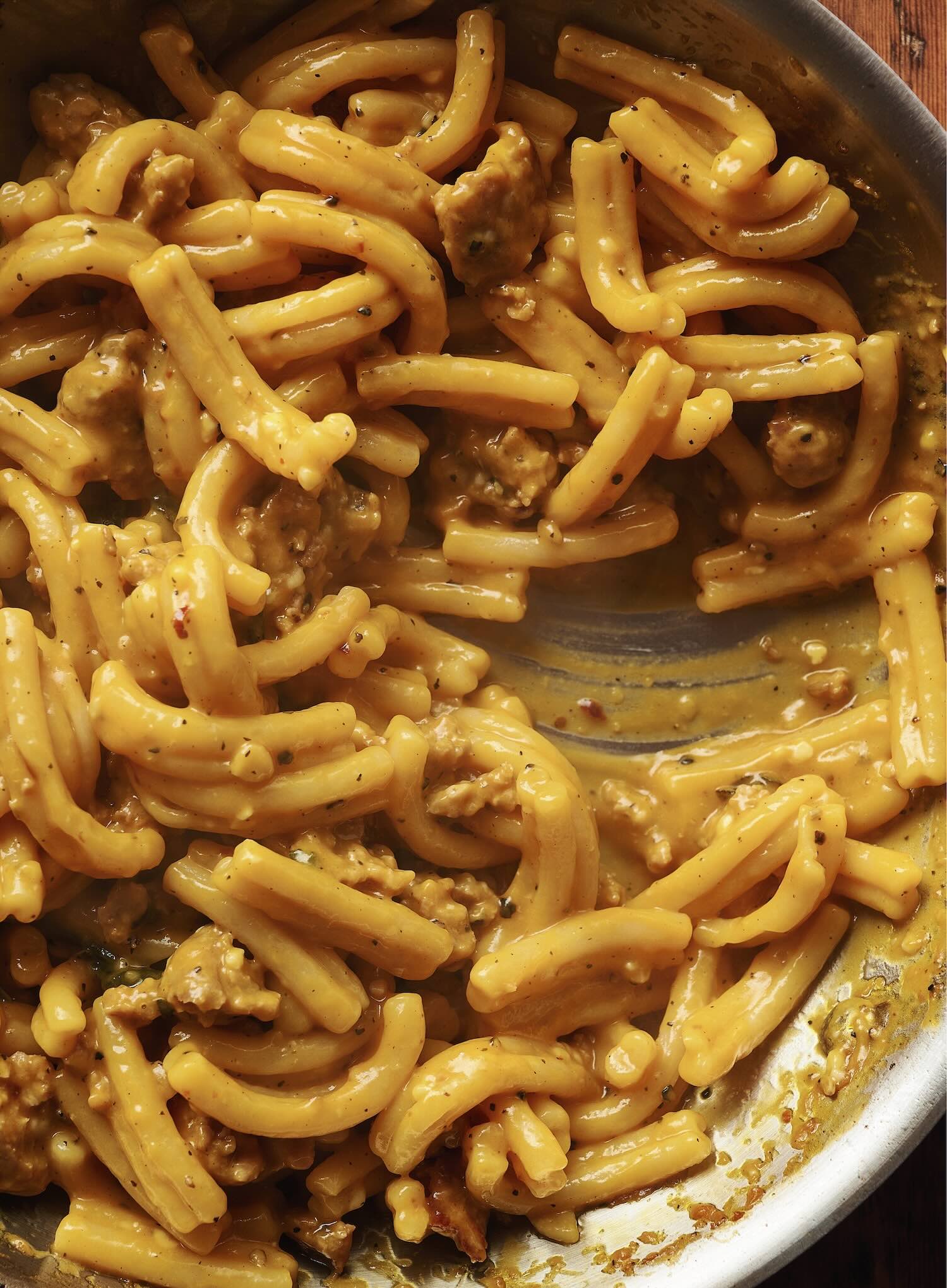
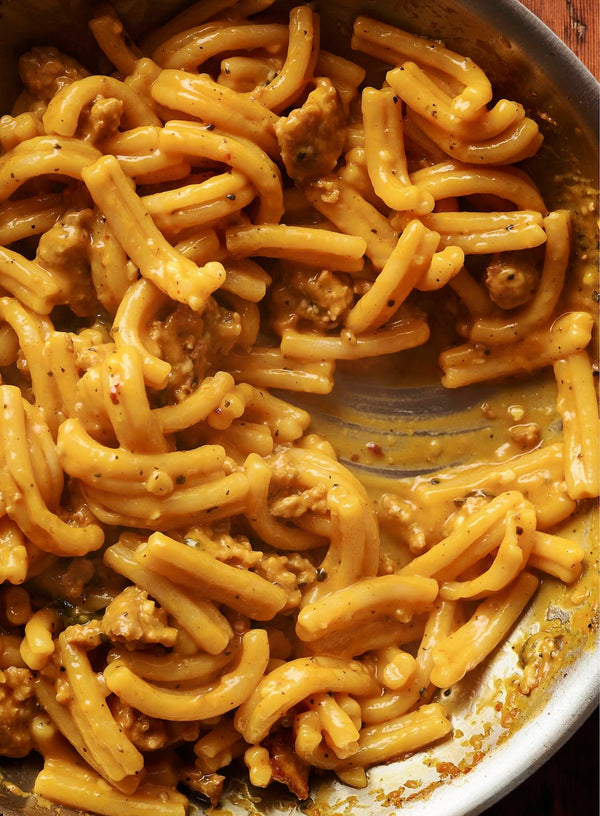
Pasta with Butternut Squash, Sausage, Sage and Spicy Chiles
Posted by:
Jacobsen Salt Co.
Posted on:
Oct 03, 2025
Shop The Recipe
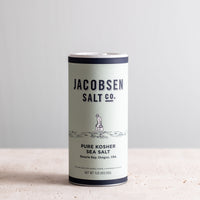
Pure Kosher Sea Salt
$13
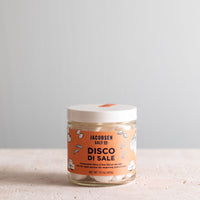
Disco Di Sale
$12
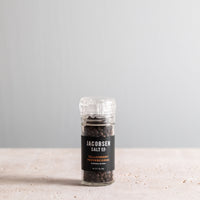
Sourced Tellicherry Peppercorn Grinder
$11
Joshua McFadden is a sought-after consultant in the food world and a James Beard winning author of Six Seasons: A New Way with Vegetables and Grains for Every Season: Rethinking Our Way with Grains. With his latest book, Six Seasons of Pasta: A New Way with Everyone's Food, noodles become the perfect showcase for each season's bounty of produce.
A roasted squash puree gives this dish a rich creaminess without any cream. Make a double batch of the puree and freeze half for the next time you make this dish.
I call for butternut squash here rather than another variety because I like the flavor, it’s easy to find, and the shape of the squash is cooperative when it comes to peeling and cooking—no weird crenellations. But the world of winter squash is wide and delicious, so substitute other varieties and see what you like best.
Recipe by: Joshua McFadden
Photos by: AJ Meeker
Serves 2 or 3
Before Diving In: Joshua McFadden on Salt
Why is salt so important?
Adding the salt is a crucial part of bringing the pasta water to a boil. By salting the boiling water, you are eventually salting the noodles themselves, and creating a “broth” that you’ll use when building the pasta sauce. If your pasta water is too salty, you can wreck your sauce. Not salty enough, and your sauce will be underseasoned.
How much salt is enough?
I’m sure that in the past, I’ve said that pasta water should taste like ocean water, but in fact, that’s a bit too salty.For the recipes in this book, I call for 1 tablespoon (10 g) of kosher salt per quart/liter or 4 tablespoons (40 g) per gallon (4 L). This amount will season your noodles nicely, and the pasta water will bring a generous amount of salt to your sauce.
Process
For the Butternut Squash Puree:
Heat the oven to 450°F (230°C). Line a sheet pan with parchment paper. Cut the squash in half lengthwise, scoop out the seeds, drizzle the cut faces with olive oil, and season lightly with salt. Arrange the squash cut side up on the prepared sheet pan and roast for 20 minutes. Then reduce the oven temperature to 325°F (160°C) and roast until the squash is totally tender when pierced with a paring knife in a few places, another 20 to
40 minutes.
Let the squash cool until you can handle it, then scoop the flesh into a blender or food processor (for small quantities, a food processor will work better); discard the skin. Puree the squash, adding a glug or two of olive oil and a splash of water as needed to create a thickish puree; season lightly with salt.
Use the squash puree right away or freeze for up to 3 months.
For the Pasta:
Fill a large pot (at least 6 quarts/L) with 1 gallon of water; add 4 tablespoons kosher salt (*or 4 tablets of Disco di Sale), cover the pot, and bring the water to a boil while you make your sauce. If the water begins to boil before your sauce is ready, turn down the heat, but don’t let the volume of the pasta water reduce by boiling off.
Shape the sausage into a patty. Heat a generous glug of olive oil in a large skillet over medium-high heat. When the oil is hot, add the sausage and sear, smashing the patty down from time to time; don’t move it until a nice crust forms on the bottom, about 5 minutes.
Flip the sausage, add the garlic and sage, and reduce the heat to medium. Remove the sage leaves as soon as they become slightly crisp, 30 seconds to 1 minute; transfer to a paper towel to drain. Cook the garlic and sausage until the garlic is browning nicely and the sausage is almost cooked through, another 2 to 3 minutes. With your spatula or the back of a spoon, smash the garlic into the oil and break up the sausage patty into smaller bits.
Add the Calabrian chiles, season with many twists of black pepper, and cook for a few seconds to infuse the oil with the spices.
Add about 1/2 cup of water from the pasta pot to the pan and simmer, scraping to dissolve any browned bits on the bottom of the pan, until the sausage is fully cooked and the water has reduced by half, 2 to 3 minutes.
Add the squash puree and cook, stirring, for a few seconds to integrate all the ingredients. Slide the skillet off the heat.
Bring the pasta water (back) to a boil, add the noodles, and set your timer for 2 minutes less than the shortest suggested cooking time on the package of pasta; this will ideally be 2 minutes before the pasta is al dente. Stir the noodles several times during the first 2 minutes of cooking to prevent them from sticking to the bottom of the pot or otherwise clumping together.
When the timer goes off, start tasting the noodles. When they seem like they are 1 1/2 to
2 minutes away from a perfect al dente, drain and transfer them to the sauce in the skillet, making sure to reserve at least 1 cup of the pasta water.
Slide the skillet back onto medium heat and finish cooking the noodles, tossing and adding plenty of splashes of pasta water until the noodles are perfectly al dente and the sauce is nicely juicy. If the sauce seems watery, simmer for another few seconds to tighten it up, bearing in mind that the cheese will thicken it.
Reduce the heat to very low. Add the grated cheese and butter and toss to emulsify with the other sauce ingredients, adding splashes of pasta water (or plain hot water, if things are getting too salty) if needed to keep the consistency creamy and prevent the cheese from clumping. Taste and add more salt or black pepper if you like.
Divide the pasta between two or three warm bowls, crumble the fried sage over the top, and serve right away, with more cheese to add at the table.

Excerpted from Six Seasons of Pasta by Joshua McFadden with Martha Holmberg (Artisan Books). Copyright © 2025. Photographs by AJ Meeker.

